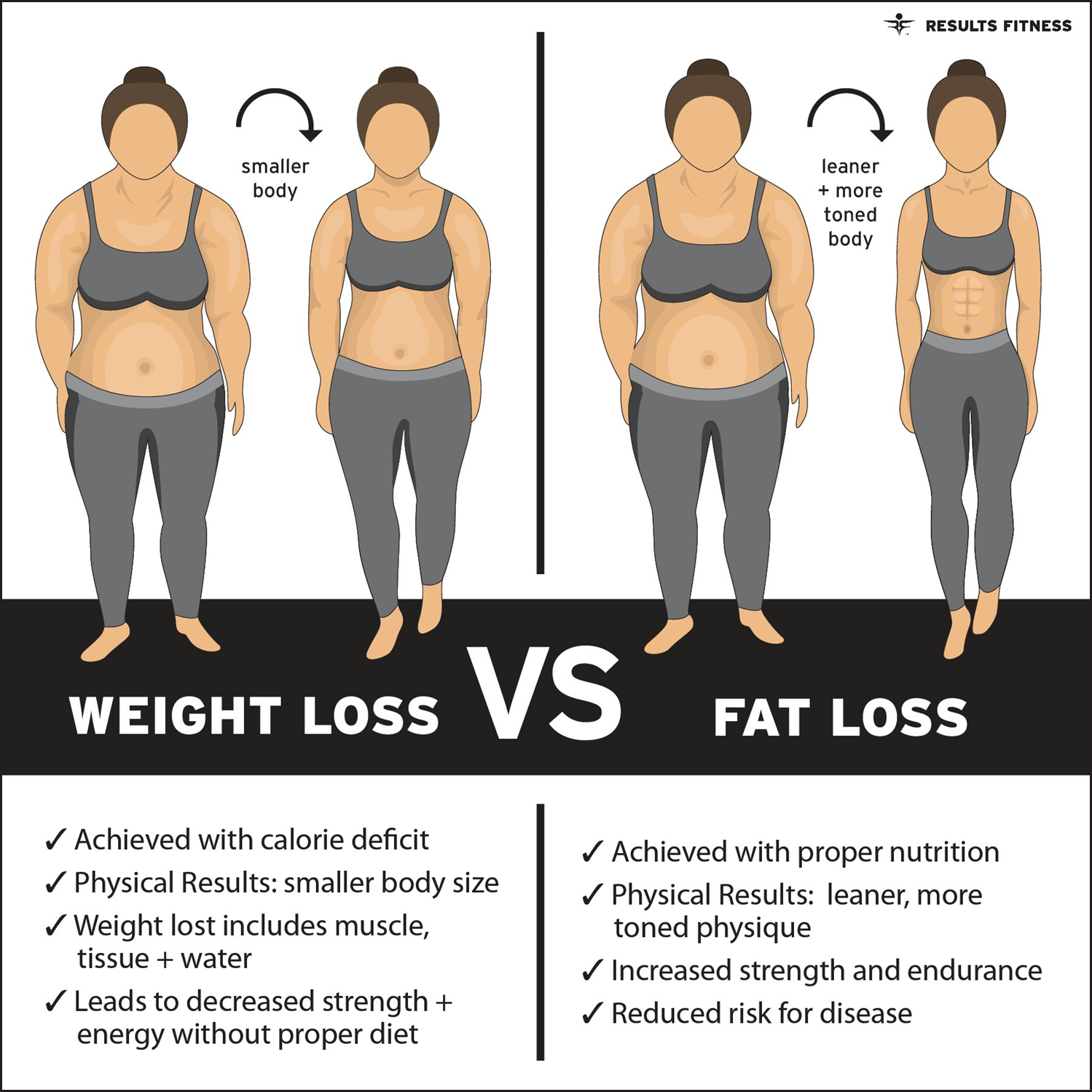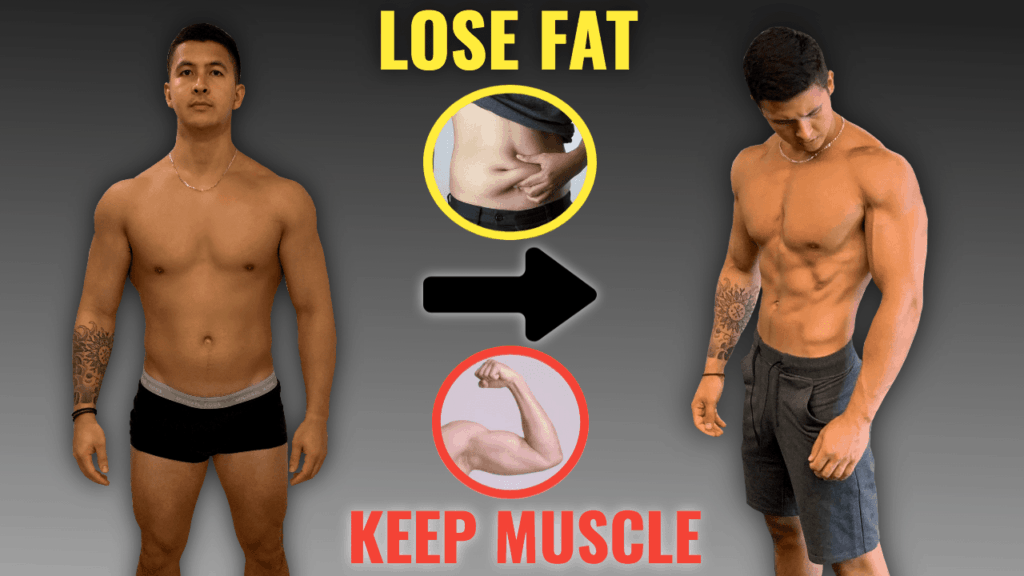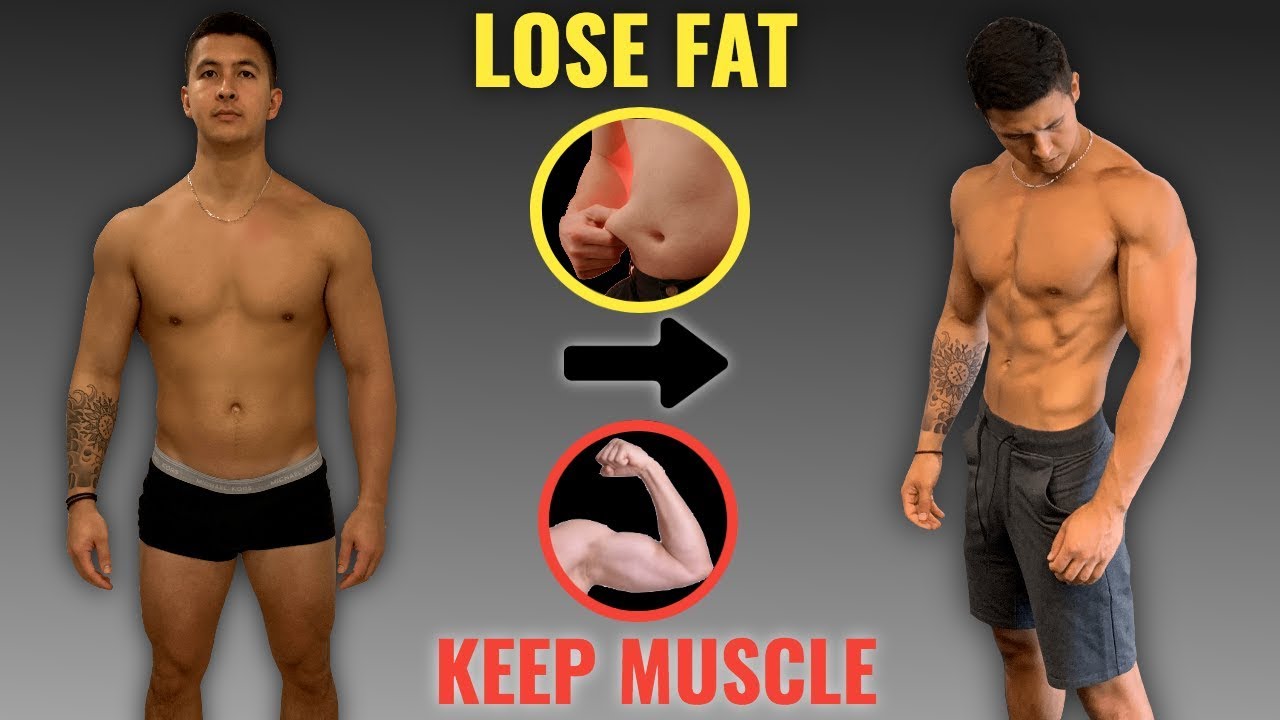How to lose fat instead of muscle, maintain a balanced diet with sufficient protein and incorporate strength training into your routine. Losing fat while preserving muscle requires a strategic approach.
A balanced diet rich in protein helps prevent muscle loss. Consuming fewer calories than you burn is essential for fat loss. Strength training exercises, such as weight lifting, support muscle retention and growth. Adequate rest and hydration also play crucial roles.
Avoid crash diets or excessive cardio, as these can lead to muscle loss. Consistency and patience are key to achieving sustainable results. By focusing on these practices, you can achieve a leaner, healthier body without sacrificing muscle mass.
The Science Of Fat Loss Vs. Muscle Maintenance
Understanding how to lose fat while maintaining instead of muscle can be tricky. Knowing the science behind it helps. Your body needs a balanced approach to shed fat and keep muscle.
Caloric Deficit Explained
A caloric deficit means eating fewer calories than you burn. This forces your body to use stored fat for energy. But a big deficit can cause muscle loss too.
To avoid losing muscle, aim for a small caloric deficit. Here’s an example:
| Daily Calories Burned | Calories to Eat |
|---|---|
| 2000 | 1800 |
| 2500 | 2250 |
Importance Of Macronutrient Balance
Your diet should include the right balance of macronutrients. These are proteins, fats, and carbs. Each plays a role in fat loss and muscle maintenance.
Proteins help build and repair muscles. Fats provide energy and support cell growth. Carbs fuel your workouts and help recovery.
- Protein: 1.2 to 1.6 grams per kg of body weight
- Fats: 20-35% of total daily calories
- Carbs: Remaining daily calories after protein and fats
Eating enough protein is key. It helps preserve muscle during fat loss. Balance your fats and carbs to stay energized.
Role Of Protein In Preserving Muscle Mass
Protein plays a crucial role in preserving muscle mass during fat loss. It helps repair and build muscle tissue, ensuring you don’t lose muscle while shedding fat. Proper protein intake supports muscle recovery after workouts, maintaining your strength and metabolism.
Optimal Protein Intake
Determining your optimal protein intake is vital for fat loss. The recommended daily allowance (RDA) for protein varies based on individual needs. Generally, a good range is 1.6 to 2.2 grams of protein per kilogram of body weight per day. For those engaging in intense workouts, aim for the higher end of this range.
| Activity Level | Protein Intake (grams per kg) |
|---|---|
| Sedentary | 0.8-1.0 |
| Moderate Activity | 1.2-1.6 |
| Intense Activity | 1.6-2.2 |
Best Protein Sources For Fat Loss
Incorporating high-quality protein sources into your diet is essential. Here are some of the best protein sources for fat loss:
- Lean meats – Chicken breast, turkey, lean beef
- Fish – Salmon, tuna, mackerel
- Dairy – Greek yogurt, cottage cheese, milk
- Plant-based – Lentils, chickpeas, quinoa
- Protein supplements – Whey protein, plant-based protein powders
These sources provide essential amino acids and support muscle preservation. Combining these protein sources with a balanced diet enhances fat loss while maintaining muscle mass.
Strength Training: Key To Retaining Muscle
How to lose fat without instead of muscle, strength training is crucial. It helps maintain muscle mass while burning fat. This ensures you achieve a leaner, more toned physique.
Effective Strength Training Routines
Choosing the right strength training routines is essential. Here are some effective routines:
- Compound Exercises: Focus on exercises like squats, deadlifts, and bench presses. These work multiple muscle groups at once.
- Progressive Overload: Gradually increase the weight you lift. This helps build and maintain muscle.
- Consistency: Train at least three times a week. Consistency is key to seeing results.
Avoiding Common Training Mistakes
Avoiding mistakes can make your strength training more effective. Here are some common mistakes:
- Skipping Warm-ups: Always warm up your muscles. This prevents injuries and improves performance.
- Overtraining: Give your muscles time to recover. Overtraining can lead to muscle loss and fatigue.
- Ignoring Form: Focus on proper form. Poor form can cause injuries and reduce effectiveness.
By following these tips, you can ensure your strength training helps you lose fat while retaining muscle.

Credit: resultsfitnessforlife.com
Cardiovascular Exercises For Fat Loss
Cardiovascular exercises play a vital role in losing fat while preserving muscle. These exercises increase your heart rate and burn calories efficiently. Let’s dive into two popular types of cardio workouts: High-Intensity Interval Training (HIIT) and Steady-State Cardio.
High-intensity Interval Training (hiit)
High-Intensity Interval Training, or HIIT, is a workout method that alternates between short bursts of intense activity and periods of rest. This method is effective for fat loss.
- Short Duration: HIIT sessions typically last 20-30 minutes.
- High Calorie Burn: Burns more calories in less time.
- Afterburn Effect: Keeps burning calories even after the workout.
HIIT workouts can include activities like sprinting, cycling, or jump rope. Aim for a 1:1 ratio of exercise to rest. For example, sprint for 30 seconds, then walk for 30 seconds.
Steady-state Cardio: Pros And Cons
Steady-State Cardio involves maintaining a consistent, moderate pace for an extended period. This type of workout is also beneficial for fat loss but has its pros and cons.
| Pros | Cons |
|---|---|
| Easier on Joints | Time-Consuming |
| Lower Risk of Injury | Less Effective for Afterburn |
| Improves Endurance | Can Be Boring |
Steady-State Cardio activities include jogging, swimming, and cycling at a steady pace. Aim to maintain this pace for 45-60 minutes. This helps in consistent calorie burning without overexertion.
Choosing the right type of cardio depends on your fitness level and goals. Both HIIT and Steady-State Cardio offer unique benefits for fat loss.
Nutritional Strategies For Optimal Fat Loss
How to achieving loss fat while preserving instead of muscle requires smart nutritional strategies. These strategies help you burn fat and keep your muscles strong. Below, we explore specific methods to optimize fat loss.
Timing Your Meals For Fat Loss
How to Meal timing plays a crucial role in fat loss. Eating at the right times can boost your metabolism and support instead of muscle retention.
- Breakfast: Start your day with a high-protein meal. This keeps you full longer and reduces cravings.
- Lunch: Include lean proteins and vegetables. This combination helps maintain energy levels.
- Dinner: Opt for a balanced meal with proteins, fats, and carbs. Eating too late can slow down fat loss.
Consider incorporating snacks between meals. Healthy snacks can prevent overeating and keep your metabolism active.
Foods To Avoid And Why
Some foods hinder your fat loss goals. Avoiding them can make a significant difference.
| Food | Reason to Avoid |
|---|---|
| Sugary Drinks | High in empty calories and spike insulin levels. |
| Processed Foods | Contain unhealthy fats and added sugars. |
| White Bread | Low in nutrients and high in simple carbs. |
| Fried Foods | High in unhealthy fats and calories. |
Eliminating these foods can help you achieve your fat loss goals. Focus on whole, unprocessed foods for better results.
The Role Of Hydration And Sleep
Losing fat without losing muscle can be challenging. Two important factors are often overlooked: hydration and sleep. Both play a crucial role in supporting your weight loss goals.
Water Intake And Fat Metabolism
Water intake is essential for your body’s fat metabolism. Drinking enough water helps your body break down fat cells. It also helps flush out toxins.
Here are some simple tips to ensure you’re drinking enough water:
- Drink a glass of water before each meal.
- Carry a water bottle with you.
- Choose water over sugary drinks.
Staying hydrated boosts your metabolic rate. This helps you burn more calories even when resting. Drinking cold water can increase calorie burning. Your body works harder to warm it up.
Sleep’s Impact On Weight Loss
Sleep is another critical factor in losing fat instead of muscle. Lack of sleep can hinder your weight loss efforts. It affects your hunger hormones, making you feel hungrier.
Here are some tips for better sleep:
- Maintain a consistent sleep schedule.
- Avoid screens before bedtime.
- Create a relaxing bedtime routine.
Getting 7-9 hours of sleep each night is ideal. Quality sleep helps your muscles recover and grow. It also supports your body’s ability to burn fat.
Remember, proper hydration and sleep are key to effective weight loss. They help you lose fat while preserving muscle.
Supplements That Support Fat Loss
Losing fat while preserving muscle can be challenging. Supplements can help with this process. They boost your metabolism, reduce appetite, and increase energy. In this section, we will discuss natural supplements and how to understand supplement labels.
Natural Supplements For Fat Loss
Natural supplements are often safer and more effective. Here are some common options:
- Green Tea Extract: Rich in antioxidants, boosts metabolism.
- Caffeine: Enhances fat burning and increases energy.
- Garcinia Cambogia: Reduces appetite and prevents fat storage.
- CLA (Conjugated Linoleic Acid): Helps reduce body fat.
Understanding Supplement Labels
Reading supplement labels is crucial. Here’s how to understand them:
| Label Element | What to Look For |
|---|---|
| Ingredients: | Natural sources, no fillers or additives. |
| Dosage: | Recommended daily intake, not too high. |
| Certifications: | Third-party tested, quality seals. |
Always consult a healthcare provider before starting any supplement. This ensures safety and effectiveness.
Monitoring Progress And Adjusting Your Plan
To lose fat instead of muscle, monitoring progress is crucial. This ensures your plan is effective and goals are met. Adjusting your plan helps maintain muscle while shedding fat.
Tracking Your Body Composition
Tracking body composition is key to understanding fat and muscle changes. Simple methods include:
- Body Fat Scales: These provide a quick estimate of body fat percentage.
- Skinfold Calipers: Measure fat at different body sites.
- Body Measurements: Track changes in waist, hip, and other areas.
Using these methods helps you stay informed about your body’s changes.
When To Adjust Your Strategy
Adjust your plan if progress stalls or muscle loss occurs. Look for signs such as:
- Plateau: No change in weight or body composition for 2-4 weeks.
- Muscle Loss: Decreased strength or muscle size.
- Low Energy: Feeling tired or weak often.
Make small changes to your diet or exercise routine. Increase protein intake or adjust workout intensity to maintain muscle.

Credit: builtwithscience.com
Frequently Asked Questions
How Can I Lose Fat Without Losing Muscle?
To lose fat without losing muscle, focus on a balanced diet, strength training, and adequate protein intake. Ensure you’re in a moderate calorie deficit. Consistency is key.
What Foods Help Lose Fat But Keep Muscle?
Foods high in protein like chicken, fish, and legumes help maintain muscle. Include healthy fats and complex carbs for energy.
Is Cardio Or Strength Training Better For Fat Loss?
Both are important. Cardio burns calories, aiding fat loss, while strength training preserves and builds muscle. Combine both for best results.
How Much Protein Is Needed To Maintain Muscle?
Aim for 1. 2 to 2. 2 grams of protein per kilogram of body weight daily. This helps repair and build muscle.
Conclusion
Achieving fat loss while preserving muscle requires a strategic approach. Focus on balanced nutrition, regular strength training, and adequate rest. Stay consistent with your efforts, and listen to your body. By following these steps, you can reach your fitness goals effectively.
Remember, patience and persistence are key to lasting results.




Leave a Reply